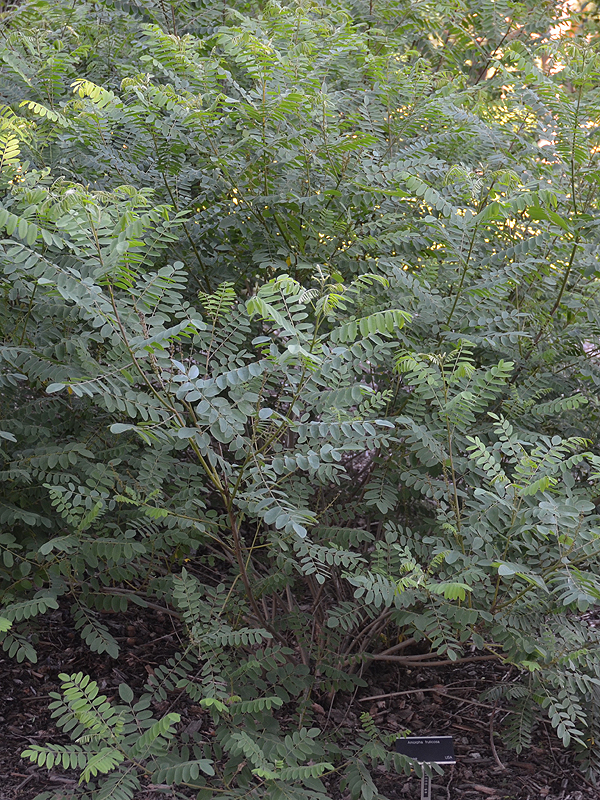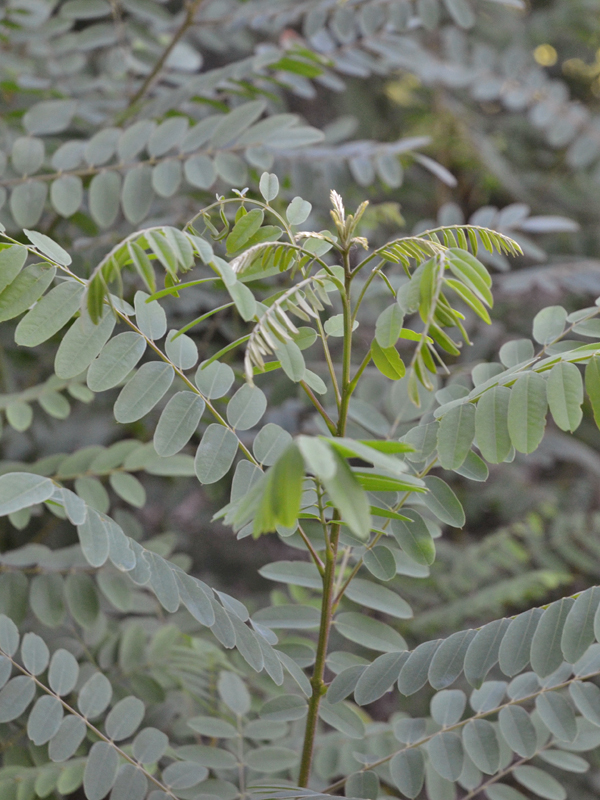| Shape | An arching shape. |
| Landscape | This plant can be used as an ornamental plant and as a windbreak. |
| Propagation | Scarification must occur. This can be done with sulfuric acid for 5 - 8 minutes or with tumble scarification for 2 - 3 hours. Also a hot water treatment with 5 - 10 grams of seed in 100 ml of 90°C water and let stand for 1 hour. Cutting from softwood stems can also be rooted, take cutting June/July and plant in peat moss, perlite growing media and keep moist, this method has a success rate of roughly 90%. |
| Cultivation | Highly adaptable to soil pH and does well in poor, dry, sandy soils and full sun. |
| Pests | Rust fungi (Uropyxis amorphae), leaf spots, powdery mildew and twig canker. |
| Notable Specimens | The University of Alberta Botanic Garden, Edmonton, Alberta, Canada. |
| Habitat | Wetlands and along river banks. |
| Bark/Stem Description | Scattered small lenticels. |
| Flower/Leaf Bud Description | Imbricate, often superposed, essentially glabrous and appressed. |
| Leaf Description | Alternate, pinnately compound leaves with a varying amount of leaflets of 13 - 33, can be oval or elliptic with a size of 1.2 - 3.8 cm long and 0.6 - 1.2 cm wide. Mucronate at apex, rounded at ends, finely pubescent and glabrate; short thread-like stipule at the base of each leaflet. |
| Flower Description | Consists of one petal and is 0.8 cm long on 7.5 - 15 cm upright spikes
|
| Fruit Description | Small 0.8 cm long kidney-shaped pod covered in stipules.
|
| Colour Description | Leaves green in summer turning to yellow in autumn. Flowers are indigo containing orange anthers. An early hard freeze will turn foliage brown. The stems are green when young and turn to a brownish-grey with maturity. |
| Texture Description | Bark is smooth. |

